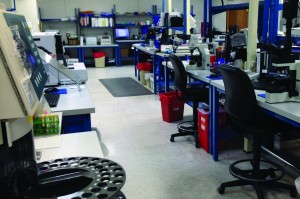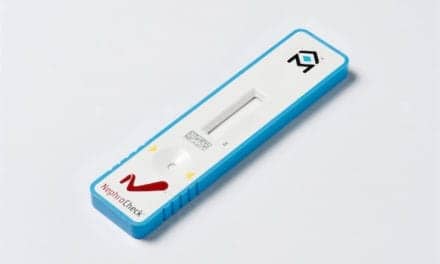
Elimination of visual barriers and close proximity of workstations promotes lab efficiency and communication among lab techs. Photo courtesy Laboratory Alliance of Central New York.
This is a companion article to the feature, “Managing Up.”
Clinical laboratories want to plan for ways to improve their workflow, reduce turnaround time, and efficiently use labor and financial resources, while balancing the need to improve quality, advises Nilam Patel, MT(ASCP), SH, senior product manager for automated solutions at Sysmex America Inc, Lincolnshire, Ill.
Sysmex’s approach to assisting clinical laboratories with their decisions regarding lab design and system upgrades includes the use of free workflow trending analysis conducted by Sysmex specialists known as laboratory solution consultants. These trained consultants guide labs to consider variables such as location and space requirements, facility requirements (for instance, power, drain, weight of the automated system, and IT network capability), efficiency impacts, service-level demands (ie, turnaround time plus workload), and technology advances, says Patel.
Rodney G. Day, MS, MT(ASCP), SC, senior laboratory consultant at LGP Consulting Inc, Wood River, Ill, says external consultants can be valuable in assisting lab directors and lab managers in making these decisions. “In addition to being specialized in Lean methods, simulation tools, and business planning, these external consultants often know a great deal, both good and bad, about different instrument solutions in the marketplace. They can bring a perspective learned from many different labs, in many different locations, with different cultures. They can also provide an independent judgment not biased by laboratory vendors needing to sell certain equipment.”
Beckman Coulter Inc, Brea, Calif, is using its continuous process improvement team to help fill in this need for labs, says Kenneth McWilliams, MT(ASCP), MBA, a process consultant for the company. “We have a team in place that focuses on workflow and helping the lab look at not only their current process but how automation and lab layout can help improve the performance of their lab. This can play a huge role in designing for a better workflow using input from the consultant and from the lab. Labs can use such assistance to demonstrate to administrators the business implications of improving lab efficiency, because improved outcomes that lead to patient satisfaction translate into dollars.”
If a lab has no experience in Lean, consultants can be excellent in helping to establish the Lean culture and advising where the greatest benefits can be gained, says Lonnie D. Stallcup, Jr, BS, MT, continuous process improvement manager at the Laboratory Alliance of Central New York LLC, Syracuse, NY. “However, even after we gained sufficient experience, we relied on consultants to advise us on how to effectively introduce Lean into our microbiology department. We realized that even though we had the Lean expertise, we did not have sufficient technical expertise. While Lean does have principles that hold true across all lab departments, one should not think that Lean is a cookie-cutter approach to lab management. Each department will be unique and needs to have Lean established accordingly.”








